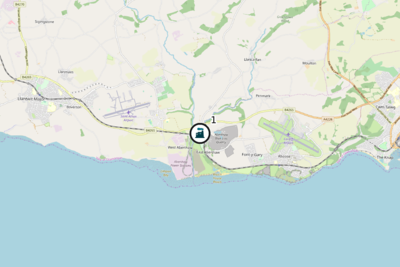Aberthaw Cement Kiln: Difference between revisions
m add picture and link |
m add page specific text |
||
| Line 3: | Line 3: | ||
[[File:Aberthaw Cement Works1.jpg|400px|left]] | [[File:Aberthaw Cement Works1.jpg|400px|left]] | ||
<br clear='left'/> | <br clear='left'/> | ||
==Overview== | |||
WikiWaste has used the website <ref>https://www.cementkilns.co.uk/index.html Cement Plants and Kilns in Britain and Ireland</ref> extensively for the reference material for each individual cement kiln. The detail on this reference website is extensive and as WikiWaste is focused upon the UK waste and resource market, only the key highlights are captured from this website and company websites accordingly to provide background and context. Aberthaw started manufacturing clinker in May 1914 (with only [[Rugby]] being older in the UK) and up to 2015 had produced 33 million tonnes of clinker through 6 rotary kilns over this period. | |||
==Raw Materials== | |||
The primary raw materials are blue Lias limestone and clay form the adjacent quarry and carboniferous limestone mainly from Glamorgan. | |||
==Waste | ==Ownership== | ||
* 1914 to 1983 Aberthaw and Bristol Channel Cement Co. Ltd | |||
* 1983 to 2001 Blue Circle | |||
* 2001 to 2013 Lafarge | |||
* 2013 to 2015 Lafarge Tarmac | |||
* 2015 to Present [[CRH plc]] (owners of [[Tarmac]]) | |||
==Waste Used on Site== | |||
{{CKWaste|EPR=BL3986ID}} | {{CKWaste|EPR=BL3986ID}} | ||
==References== | ==References== | ||
<references /> | <references /> | ||
Revision as of 13:18, 15 April 2020
| Aberthaw Cement Kiln | |
 See Cement Kilns → page for a larger UK Wide map. | |
| Waste Licence | BL3986ID |
| Operator | Tarmac |
| Parent Company | CRH plc |
| Clinker Capacity | 0.5 Mt |
Summary site information collated from a variety of sources.

Overview
WikiWaste has used the website [1] extensively for the reference material for each individual cement kiln. The detail on this reference website is extensive and as WikiWaste is focused upon the UK waste and resource market, only the key highlights are captured from this website and company websites accordingly to provide background and context. Aberthaw started manufacturing clinker in May 1914 (with only Rugby being older in the UK) and up to 2015 had produced 33 million tonnes of clinker through 6 rotary kilns over this period.
Raw Materials
The primary raw materials are blue Lias limestone and clay form the adjacent quarry and carboniferous limestone mainly from Glamorgan.
Ownership
- 1914 to 1983 Aberthaw and Bristol Channel Cement Co. Ltd
- 1983 to 2001 Blue Circle
- 2001 to 2013 Lafarge
- 2013 to 2015 Lafarge Tarmac
- 2015 to Present CRH plc (owners of Tarmac)
Waste Used on Site
| Waste Class | Description | Tonnage Input |
|---|---|---|
| 10 01 02 | coal fly ash | 3,118 |
| 16 01 03 | end-of-life tyres | 6,826 |
| 19 12 01 | paper and cardboard | 6,900 |
| 19 12 10 | combustible waste (refuse derived fuel) | 2,408 |
References
- ↑ https://www.cementkilns.co.uk/index.html Cement Plants and Kilns in Britain and Ireland
